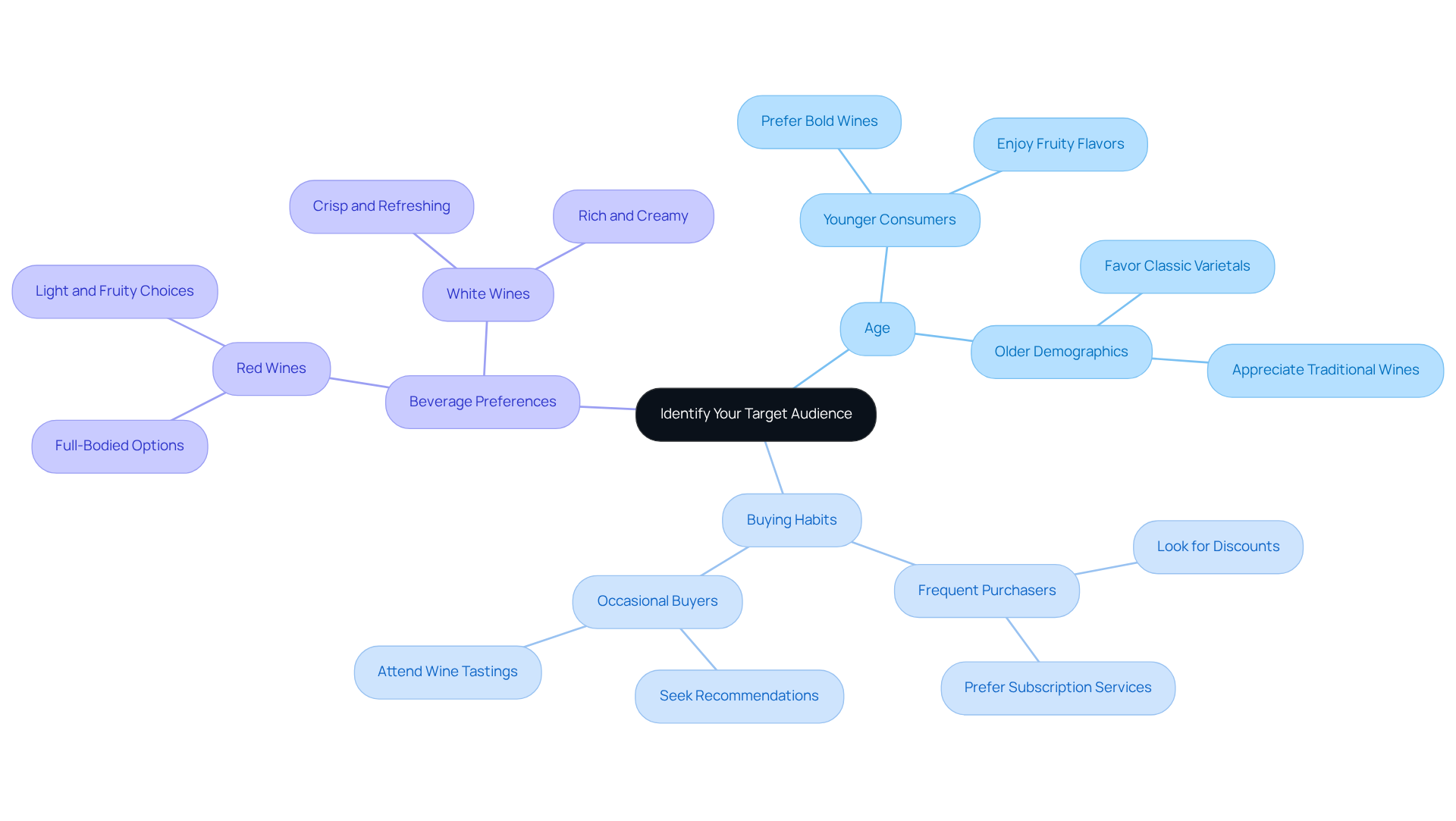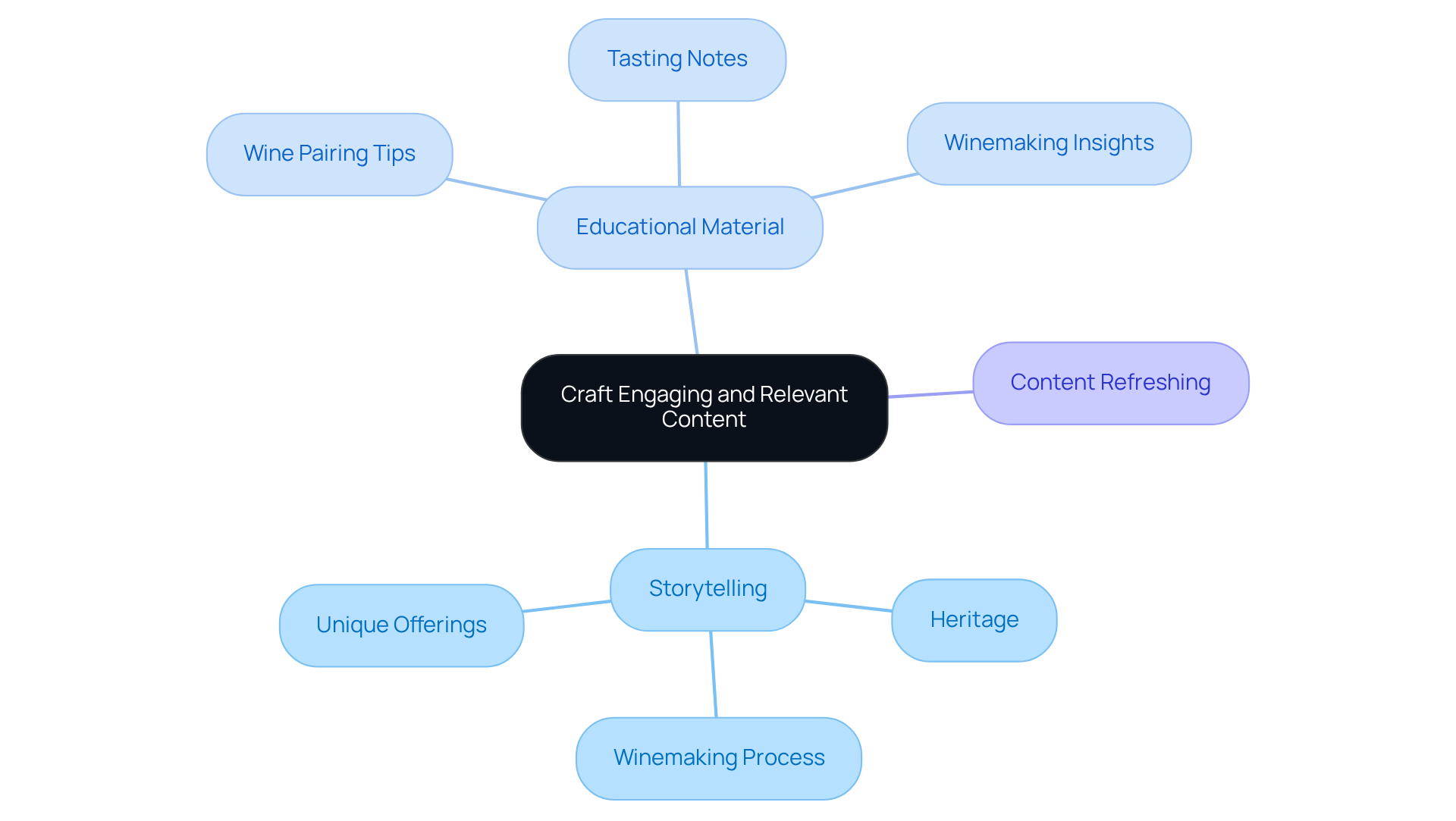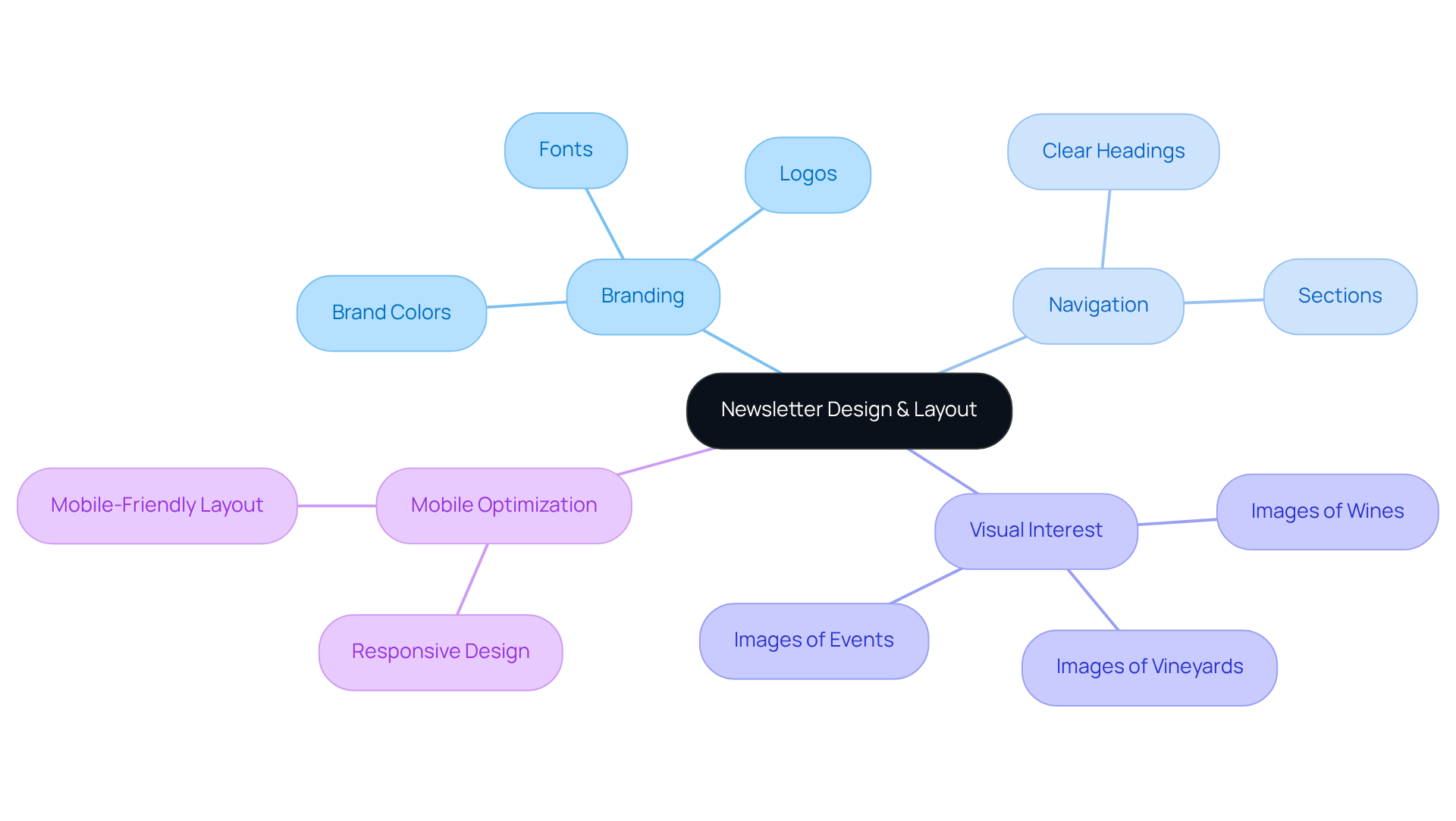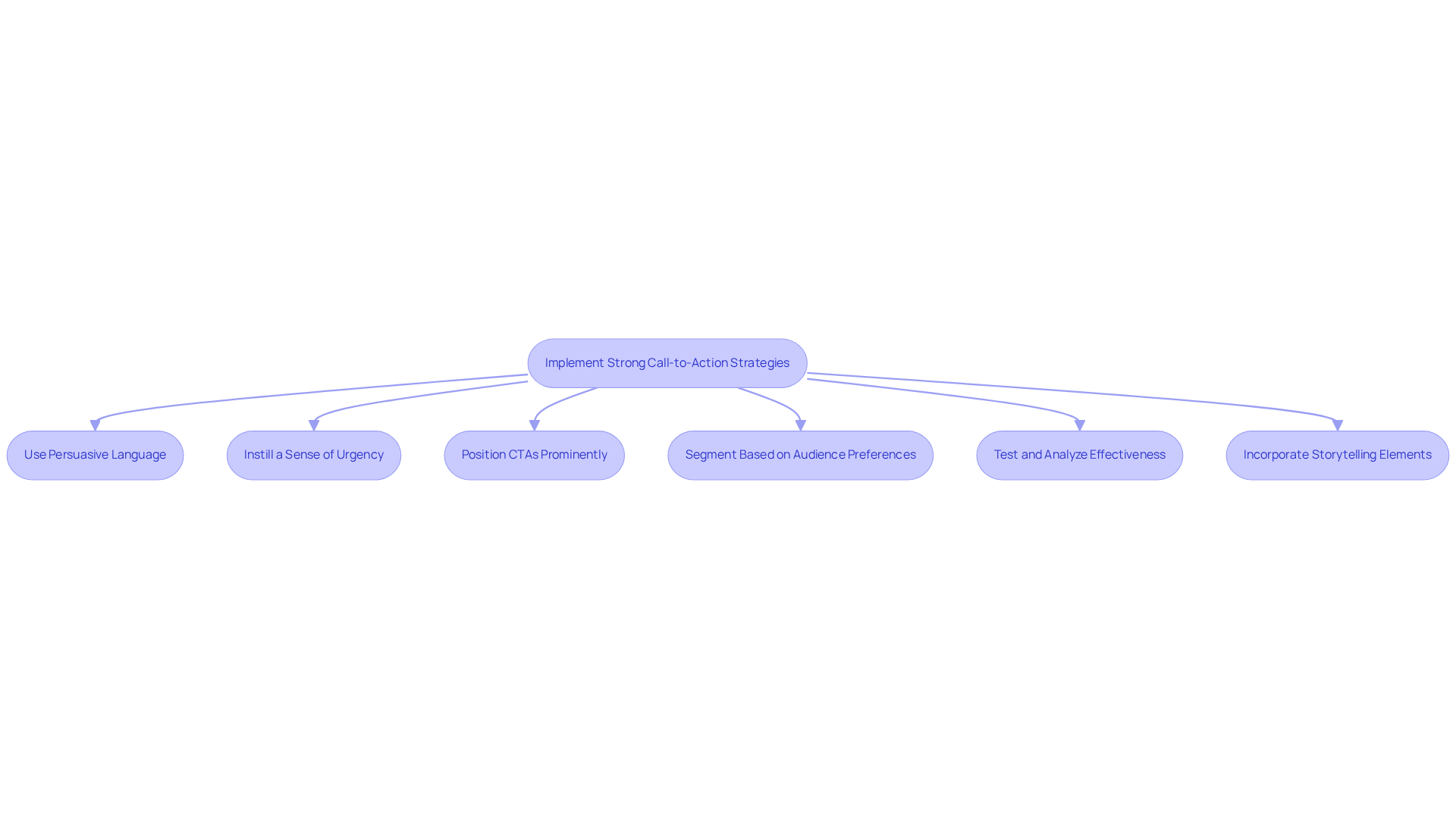Overview
The article delineates four best practices for creating impactful wine newsletters:
- Identifying the target audience
- Crafting engaging content
- Optimizing design
- Implementing compelling calls-to-action
These practices are underscored by a focus on:
- Customizing content to align with audience preferences
- Weaving in storytelling and educational elements
- Ensuring an aesthetically pleasing layout
- Employing persuasive language to enhance customer engagement and loyalty
Introduction
Crafting effective wine newsletters is essential for vineyards aiming to deepen customer relationships and drive sales. By understanding their target audience and tailoring content accordingly, wineries can create engaging newsletters that not only inform but also inspire loyalty among subscribers. The challenge, however, lies in balancing captivating storytelling, appealing design, and persuasive calls to action.
How can vineyards ensure their newsletters stand out in a crowded inbox and truly resonate with their audience? This article will explore strategies to elevate your newsletter game, ensuring it captivates and converts.
Identify Your Target Audience and Their Preferences
To create impactful wine newsletters, vineyards must first identify their target audience. This crucial step involves categorizing subscribers based on factors such as:
- Age
- Buying habits
- Beverage preferences
For instance, a winery might discover that younger consumers are inclined towards bold, fruity wines, while older demographics tend to favor classic varietals. By utilizing tools like surveys and analytics, vineyards can effectively gather this essential data.
Once the audience is clearly defined, it is imperative to customize the wine newsletters' content to align with their interests. This ensures that each segment receives personalized recommendations and relevant updates. Such a targeted approach not only enhances engagement but also fosters loyalty among subscribers, as they feel understood and valued. Ultimately, this strategy into active participants, driving both connection and sales.

Craft Engaging and Relevant Content
Crafting engaging content is essential for capturing your audience's attention and driving predictable DTC revenue. Begin by integrating storytelling elements that showcase the winery's heritage, winemaking process, or unique offerings. For instance, narrate the story behind a new beverage release, detailing the vineyard's history and the inspiration behind the blend. This approach not only fosters a deeper connection with casual buyers but also transforms them into .
Furthermore, providing educational material such as:
- Wine pairing tips
- Tasting notes
- Insights into the winemaking process
serves to educate and entertain your audience, making them more inclined to share the publication and engage with your brand. Regularly refreshing content in wine newsletters to highlight seasonal themes or upcoming events will maintain the publication's freshness and relevance, thereby enhancing your direct-to-consumer strategies and supporting the growth of family-owned vineyards.

Optimize Design and Layout for Maximum Impact
The design and layout of your newsletter are paramount to its . A clean, visually appealing template that aligns with your winery's branding is essential. By incorporating your brand colors, fonts, and logos, you create a cohesive look that resonates with your audience.
Ensure that the layout is easy to navigate, featuring clear headings and sections that guide the reader through the content. Images of your wines, vineyards, and events should be utilized to break up text and add visual interest.
Moreover, consider mobile optimization; many subscribers will read updates on their phones. A responsive design guarantees that your content looks exceptional on any device, thereby enhancing the overall user experience.

Implement Strong Call-to-Action Strategies
Strong calls-to-action are essential for converting readers into customers and play a pivotal role in transforming casual buyers into loyal club members. Each communication in the wine newsletters must include clear, actionable CTAs that direct subscribers on what to do next, aligning seamlessly with Enocap's strategies for direct-to-consumer engagement.
Employ persuasive language and instill a sense of urgency with phrases like 'Order Now' or 'Join Our Exclusive Tasting Event.' Position CTAs prominently within the newsletter, ensuring they stand out visually—consider utilizing buttons with contrasting colors to capture attention.
Furthermore, segment CTAs based on audience preferences; for example, wine newsletters may contain distinct offers for wine club members compared to casual subscribers. Regularly test and analyze the effectiveness of your CTAs to refine your approach and maximize conversions, ultimately fostering sustainable growth and loyalty within your winery's direct-to-consumer channels.
To further enhance your strategy, incorporate storytelling elements that resonate with your audience and contemplate to optimize your marketing efforts.

Conclusion
Crafting effective wine newsletters is not merely a task; it is a strategic endeavor that requires a deep understanding of the audience, the creation of engaging content, optimized design, and the implementation of powerful calls to action. By tailoring newsletters to meet the preferences and interests of specific subscriber segments, wineries can foster deeper connections and enhance customer loyalty. This personalized approach drives engagement and transforms casual readers into committed patrons.
Key strategies underscore the importance of storytelling in content creation, connecting consumers with the winery's heritage and offerings. Moreover, the significance of visually appealing designs cannot be overstated, as they enhance user experience and ensure that newsletters are both attractive and functional. Strong calls to action are equally vital, prompting readers to take specific steps that lead to increased conversions and sales.
Ultimately, the success of wine newsletters hinges on their ability to resonate with readers on multiple levels. By focusing on:
- Audience understanding
- Engaging storytelling
- Thoughtful design
- Compelling calls to action
Wineries can create newsletters that inform and inspire action. Embracing these best practices will significantly elevate a winery's direct-to-consumer efforts, ensuring that newsletters become a powerful tool for growth and engagement in the competitive wine market.
Frequently Asked Questions
Why is it important for vineyards to identify their target audience?
Identifying the target audience is crucial for vineyards as it allows them to categorize subscribers based on factors like age, buying habits, and beverage preferences, enabling them to create impactful and relevant wine newsletters.
What factors should vineyards consider when categorizing their audience?
Vineyards should consider factors such as age, buying habits, and beverage preferences when categorizing their audience.
How can vineyards gather data about their audience?
Vineyards can gather data about their audience using tools like surveys and analytics.
How does understanding the audience's preferences influence newsletter content?
Understanding the audience's preferences allows vineyards to customize the newsletter content to align with their interests, ensuring personalized recommendations and relevant updates for each segment.
What are the benefits of a targeted approach in wine newsletters?
A targeted approach enhances engagement and fosters loyalty among subscribers, as they feel understood and valued. This strategy can transform passive readers into active participants, driving connection and sales.




